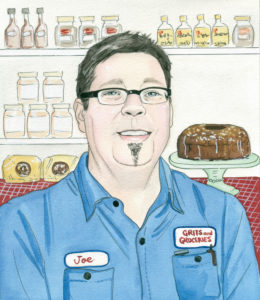Fried pies have long been a spiritual savior, proof that pleasure can be coaxed from hard times. Stamped from an inexpensive alchemy of fat, flour, and fruit, they were traditionally pulled from vats of rendering lard during pig-butchering parties or cooked up with dried apples or peaches when the pantry was getting low. “If I have any money,” Georgia bluesman Curley Weaver sang in his 1934 recording “Fried Pie Blues,” “I will buy me some.”
Today, fried pies remain a soulful expression of the Southern culinary canon. When the first trays of Hubig’s fried pies arrived in New Orleans corner markets a few months after Hurricane Katrina, cheers went up. The little local pastries, each wrapped in waxy white paper, signaled that the city would rise again.
Photo: Johnny Autry
1 of 3
Photo: Johnny Autry
2 of 3
Photo: Johnny Autry
3 of 3
Joe Trull, who grew up delivering loaves of white bread for his family’s commercial bakery in Winston-Salem, North Carolina, began frying pies as the pastry chef at NOLA, Emeril Lagasse’s French Quarter restaurant. Over ten years there, he mastered the art. The dough should be a bit softer than a standard piecrust, and meticulously crimped. The oil needs to be exactly 350 degrees and the filling slightly dry. “A lot of people don’t cook the insides first because that’s how their grandmother did it,” he says, “but it’s too wet.”
These days, if you want one of Trull’s fried pies, you have to head deep into South Carolina’s Upcountry, where Joe and his wife, Heidi, now run their own restaurant, Grits and Groceries, in Belton. Heidi handles the savory side of the menu. Joe bakes. Fried apple pies are a staple, but when it’s strawberry season, he takes advantage. Lately, he’s also been stirring in a little legal white lightning. Although the pies can be made in a skillet, Trull likes his deep-fried. Just don’t overcrowd the fryer. Otherwise, the oil cools and the pies end up greasy. “That’s the real trick,” he says, “that hot oil.”












